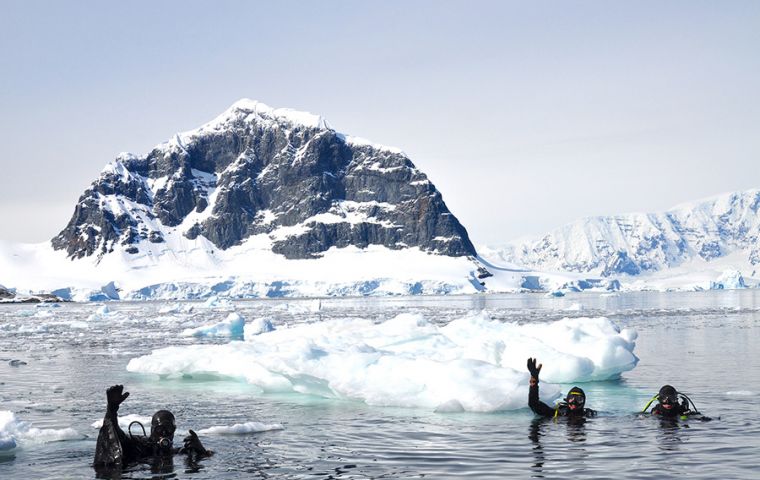MercoPress. South Atlantic News Agency
Mussels, an invasive species, have been found in South Shetland Islands Antarctic waters
 The bivalves aren’t native to Antarctica, and there’s never been any evidence of young mussels surviving in the frigid temperatures of the South Ocean
The bivalves aren’t native to Antarctica, and there’s never been any evidence of young mussels surviving in the frigid temperatures of the South Ocean  Paulina Bruning stumbled upon the mussels by accident while she was collecting native coral and sea sponges in Fildes Bay on King George Island
Paulina Bruning stumbled upon the mussels by accident while she was collecting native coral and sea sponges in Fildes Bay on King George Island Mussels are the first-ever invasive species to take up residence in Antarctica, as found by a new study published last month in Scientific Report. According to the study, scientists found a colony of mussels, most likely transported accidentally to the frozen continent from Patagonia via ship, some 75 miles north of the Antarctic Peninsula.
The discovery near the largest of the South Shetland Islands is a omen of a potential invasion of the continent, the researchers suggest, particularly as climate change and increased ship traffic plague the region.
Paulina Bruning, one of the authors of the study, stumbled upon the mussels by accident while she was collecting native coral and sea sponges in Fildes Bay on King George Island, according to the New York Times. When Bruning, a marine biologist at Laval University in Quebec City, returned to her lab, she spotted several dozen juvenile mussels clinging to one of her specimens, an orange sponge.
The bivalves aren’t native to Antarctica, and there’s never been any evidence of young mussels surviving in the frigid temperatures of the South Ocean. The ones in Bruning’s lab, were just tiny specs.
“They’re like black dots,” Jean-Charles Leclerc, a marine ecologist at Chile’s Catholic University of the Most Holy Conception, and a member of the research team, told the New York Times. “You need to look closely.”
By using DNA sequencing, the scientists were able to ascertain that the species of mussels were probably Patagonian blue mussels. But the bivalves probably didn’t drift there, because circulating ocean currents effectively barricade Antarctica. “Natural transport is really unlikely,” Dr. Leclerc said.
Ships, however, are a much likelier carrier. Very often, cruise ships take that exact route from Patagonia to the South Shetland Islands.
“I do not see other mechanisms capable of bringing a population of mussels over there,” Stefano Schiaparelli, a professor of Zoology at the University of Genoa who was not associated with the study, told weather.com. “The most probable one is therefore the hull of a ship.” As he explained, mussels have invaded other parts of the world by ship before.
It makes sense that mussels would be Antarctica’s first marine invaders, according to Kevin Hughes, an environmental researcher at the British Antarctic Survey in Cambridge. As he explained, they’re plentiful in Chilean and Patagonian waters, and they’re extremely good at attaching themselves to ships.
Whether or not the mussels can survive remains to be seen.




Top Comments
Disclaimer & comment rulesCommenting for this story is now closed.
If you have a Facebook account, become a fan and comment on our Facebook Page!